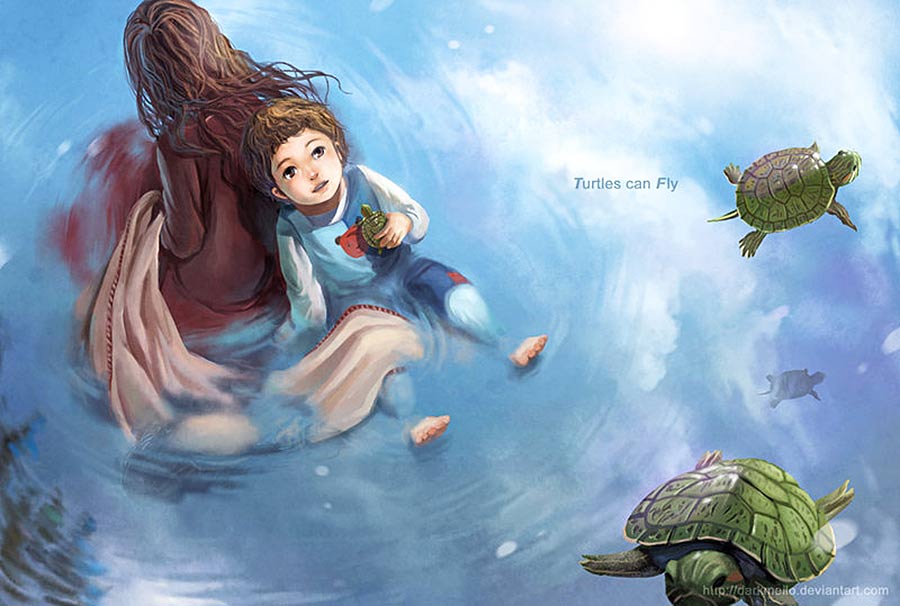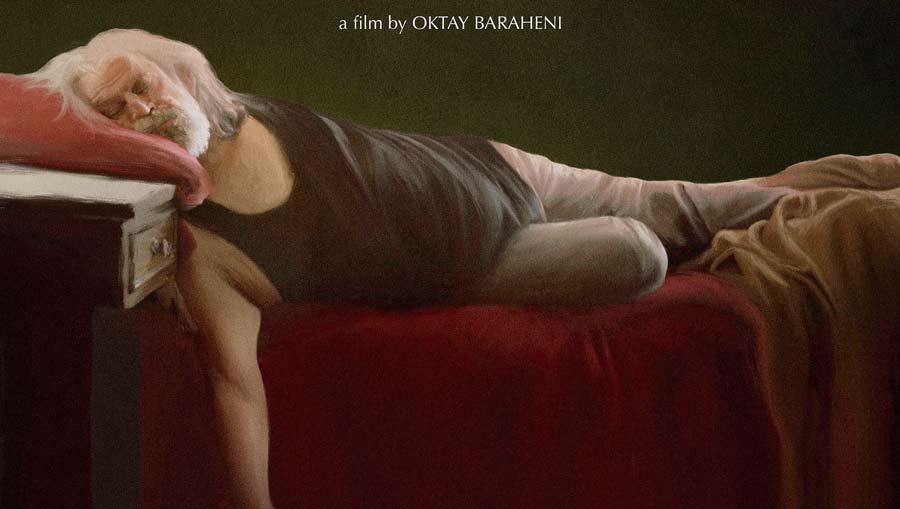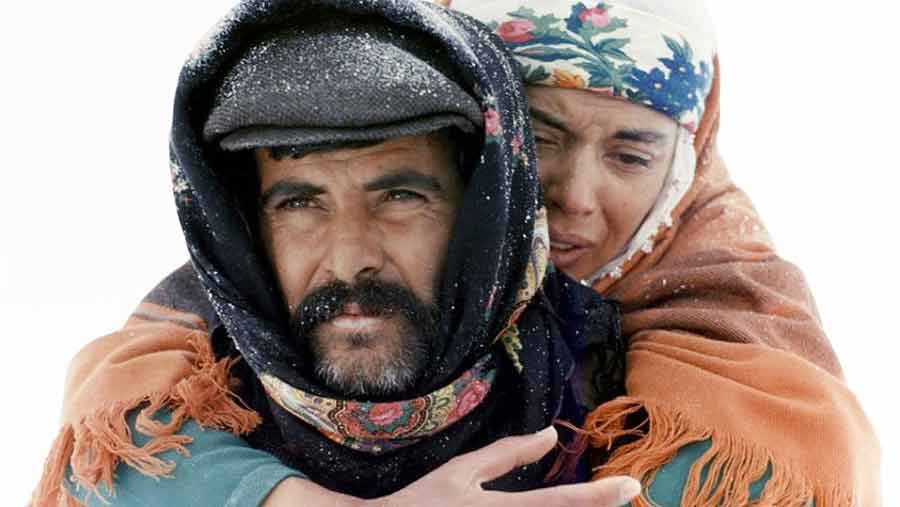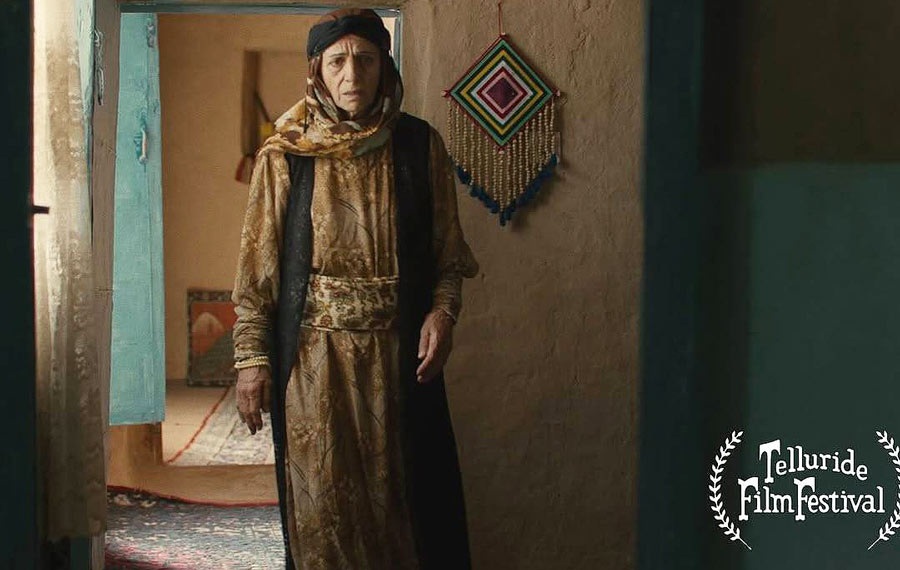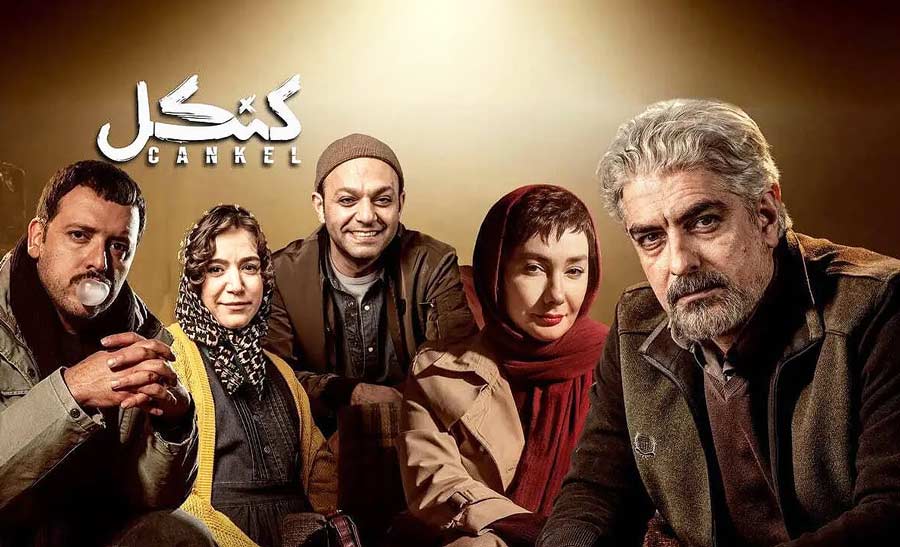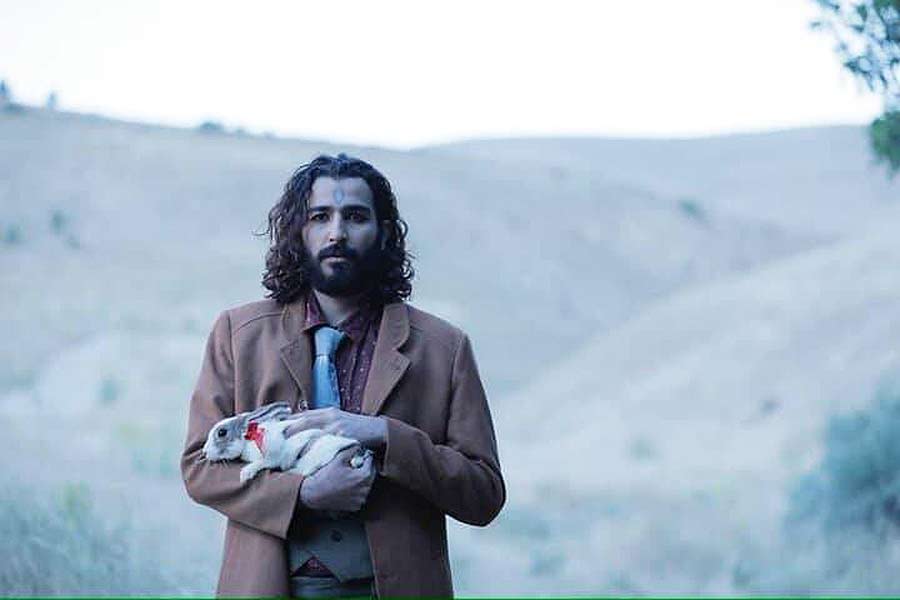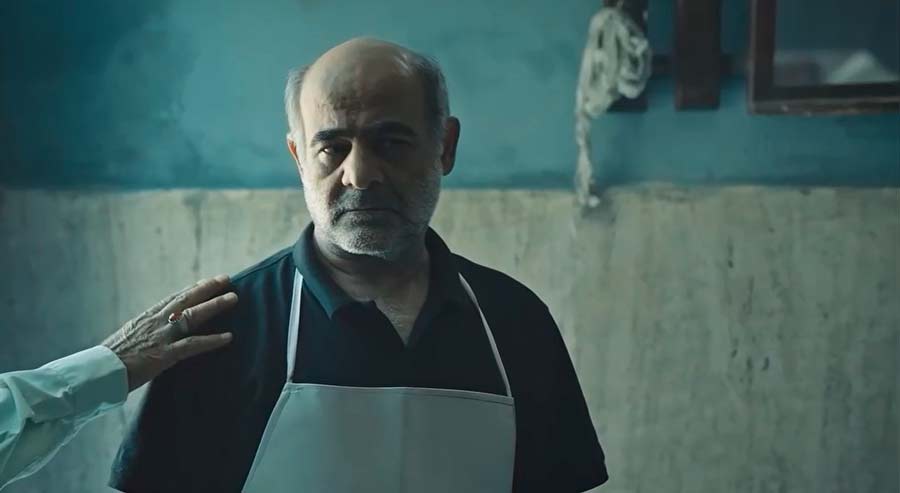Review and analysis of the animation "In the Shadow of the Cypress"
In the shade of the cypress, life breathes
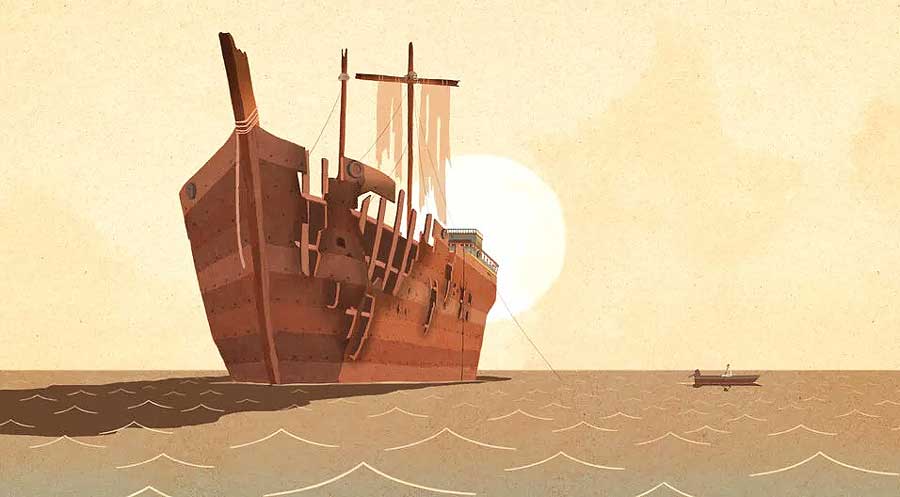
The animated film “In the Shadow of the Cypress” (produced in 2002, co-directed by Shirin Sohani and Hossein Molayemi, produced by the Center for Intellectual Development of Children and Adolescents), winner of the 2025 Oscar, is a work that tells a deep and multi-layered story using powerful symbols and images.
According to Artmag.ir, This work not only tells a simple story, but also, by using symbolic and mythological elements, depicts concepts such as life, death, the passage of time, the future and present, trauma, and salvation. In this analysis, we try to address the underlying layers of the film and the symbols present in it.
Introduction: A Shadow on the Water
“In the Shadow of the Cypress”The sea is not just water, but a mirror of trauma and hope. An old captain, trapped in a broken ship and with hands clutching memories, and a girl with tired eyes, who breaks the rope of her father’s plea, take us to a beach where the whale of life, sitting on a flower, breathes. This animation, with a silence that screams and Arman Musapour’s music that shakes the wounds, tells of a past that must be sacrificed so that a future can be born.
From the Fish Tank to the Whale Sea
The story begins with a beautiful fish imprisoned in a small crystal tank, which symbolizes the captain’s daughter herself, who is imprisoned in a humble house, among her father’s dry coughs and broken glass. When the tank breaks in the captain’s anger and by throwing an object and the fish falls to the ground, this is not the end, but the beginning. The beginning of the girl’s departure from home and arrival at the whale and the sea, and the beginning of a greater liberation and the story of the life of a community.
The girl runs to the shore, where the whale is waiting for her on a flower. This transition from the tank to the sea, from prison to liberation, is not only her journey, but also a symbol of a community that is suffocating under the burden of trauma and seeking freedom.
Fish tank and the Whale: A Journey from Stranded Life to Liberation
The whale, this huge creature that has made the beach its death shelter, with its deep, weary eyes, is the girl herself; a girl who is fed up with being nursed by a neurotic father who bangs his head on the mirror and breaks furniture. When she sits in front of the whale and sees herself in his deep, dark eyes, the whale’s water fountain puts a smile on her face, a smile that had been lost for years in the shadow of her father’s trauma, and this shows the hope that is reborn in her heart.
The whale is a symbol of the stranded life that the girl fights to save with her small hands, even if her father sees it as a threat that must be killed. The girl’s effort to save the whale is a symbol of her effort to save herself and her life. Now she is not the little Tang girl, but a steadfast woman who fights to free herself and her life.
The ship: a prison of the past that blooms
A broken ship, for the captain, is not a house but a prison of the past. The flowers he waters are alive only in this wooden wreck. He polishes memories and beautifies his prison with a broom, tea, and paint, but these efforts cannot revive the past. The flight of seagulls and feces falling on the cabin paint and the falling of a picture frame promise the collapse of this prison. When the cabin board breaks and the kettle screams, the trauma returns, but this time the captain does not escape and chooses a new path: he sinks the ship in the depths of the sea, not to commit suicide, but to sacrifice the past in order to free the whale and his daughter in the present, who are still breathing and whose unfinished story must be completed.
Carpets: Patterns of Yesterday and Tomorrow
A broken ship and a humble house contain two complete carpets and one unfinished carpet. The carpet inside the ship’s cabin and the carpet spread in the house are the complete patterns of the mother and father, a past that has frozen and tied the captain to the carpet loom of his past memories, not allowing him to think about the present and the future. Both are relics of the mother who drowned at sea on the day of the fighter jet attack, plunging the father into torment of conscience and trauma. But the unfinished carpet on the carpet loom symbolizes a little girl whose pattern is not yet fully woven and is in the process of formation and development, waiting for a hand to weave and complete it, not in the style of the past, but in a new way. A girl who weaves her own unfinished carpet, not in the style of her mother and father yesterday, but in her own way.
Don Quixote on the Right Path
The father who is in delusion is Don Quixote who once shot down fighter planes with Bruno and lost his wife, and once pulled the whale’s tail with his small boat until its engine burned in the fire of this futile effort. He gets tired of trying to save the whale, and despairing of the future, he gives up, breaks down, and flees to his shelter, but this time, seeing the tireless and hopeful effort of the girl who drives death away from the shore with wet cloths and drums, he wakes up from the trauma and delusion and does the right thing and leaves the past, this sacred ship, to the depths of the sea, not for himself or his own death, but to support the girl and maintain the dynamic flow of life in the present and save the whale.
The whale, however, is passive and intends to die. When pulled into the water, it makes no effort. It simply sinks into the water without any resistance and does not float. However, the captain, who has made up his mind, does not leave the whale there and does not consider his mission complete. For this reason, he tries to untie the rope from the whale’s fin. Although the whale throws him away again, with the perseverance he learned from the girl, he eventually forces the whale to swim in the open sea and brings it back to life, although he himself will be faced with death, perhaps dead, perhaps alive.
The Cypress, the Shadow of Hope
The cypress, through the work of the mother, has become a permanent feature on the carpet so that this symbol of life will always emanate from the hands of women and mothers and make life green.
The father is a standing cypress that has nurtured life, but its branches have taken root and are imprinted in the carpet of the past, and without dynamism and life, he now casts the shadow of the cypress over the daughter, a shadow that is both a burden and a refuge. And in the end, this shadow is a symbol of the support and life-giving that the father ultimately provides for his daughter, fulfilling the wish of saving the whale.
But the cypress has another story. In Iranian mythology, the cypress is the mother of the sun, always green and alien to death. Here, it is the daughter who becomes the cypress. A woman who gives birth to life, not for herself but for the whale sitting on a flower and a father drowning in trauma. With drums and wet cloths, like a lush cypress, he drives away death and rescues the previous generation from the shore to return them to the depths of life.
Conclusion: Previous Generation, New Generation: Confrontation or Continuation
The captain, the symbol of the previous generation, on his war-torn ship, is only thinking about preserving what he has, decorating the exterior and painting the rotten planks, in order to sanctify the wartime achievements and to make the girl, the symbol of the new generation, accept them. But now, seeing the girl’s perseverance, he comes out of his delusion and abandons his beloved ship and the wounded memories of the wartime to support this generation and sends it to the depths of the sea to start a new era with his children and the new generation. Although he himself may no longer be alive, he wants to say that until the previous generation wakes up, this beginning will be very difficult and the girl and the new generation will not be able to do much on their own.
The ending is open: Will the captain survive? We don’t know. But we do know that the shadow of his cypress is now a refuge for the girl who brings life back from the dark depths of the sea.
The animation “In the Shadow of the Cypress” uses symbolic and mythological elements to make the viewer think and reflect. Ultimately, this film shows that life always has the possibility of starting over and that the new generation can begin a new and hopeful life with the shadow cast by the old generation.


